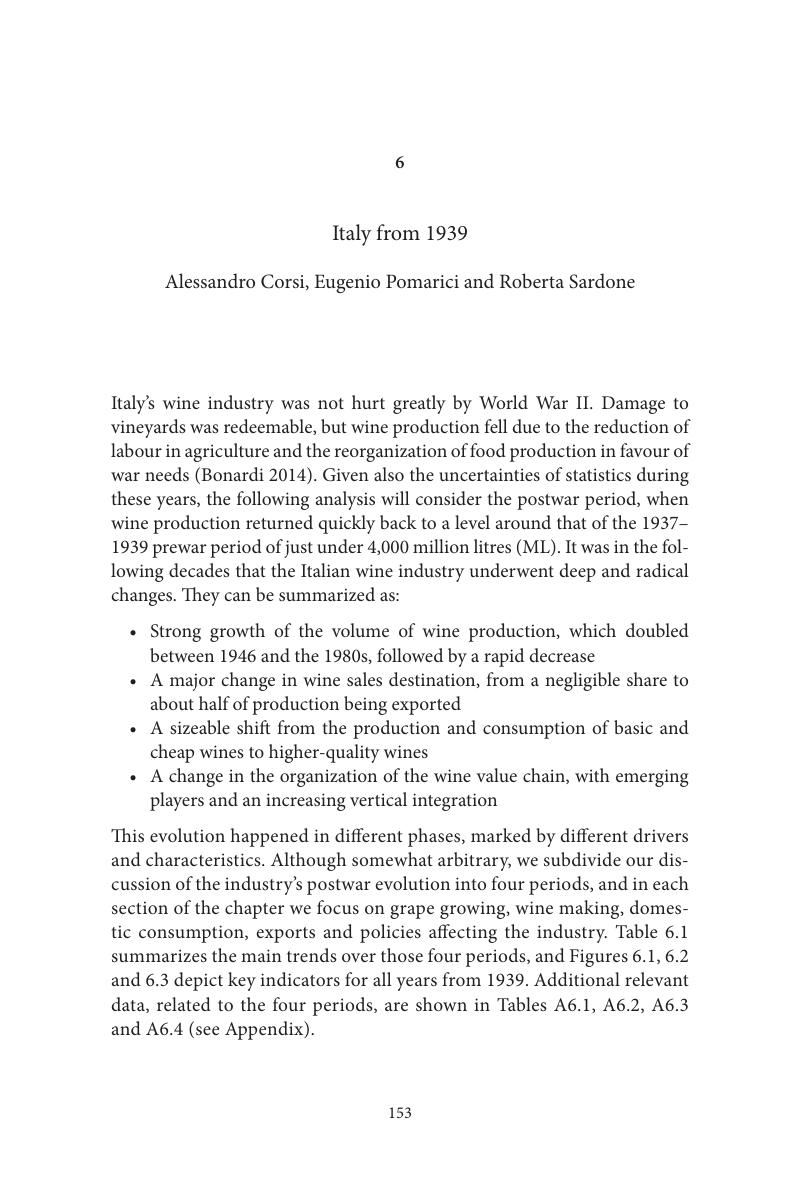Book contents
- Wine Globalization
- Wine Globalization
- Copyright page
- Contents
- Figures
- Tables
- Contributors
- Preface
- Abbreviations and Acronyms
- Technical Terms and Units
- Part I Overview
- Part II Traditional Markets
- 3 France
- 4 Germany, Austria and Switzerland
- 5 Italy to 1938
- 6 Italy from 1939
- 7 Portugal
- 8 Spain
- 9 United Kingdom
- 10 Other Europe, CIS and the Levant
- Part III Newer Markets
- Part IV What’s Ahead
- Appendix The Global Wine Markets Database, 1835 to 2016
- Index
- References
6 - Italy from 1939
from Part II - Traditional Markets
Published online by Cambridge University Press: 02 February 2018
- Wine Globalization
- Wine Globalization
- Copyright page
- Contents
- Figures
- Tables
- Contributors
- Preface
- Abbreviations and Acronyms
- Technical Terms and Units
- Part I Overview
- Part II Traditional Markets
- 3 France
- 4 Germany, Austria and Switzerland
- 5 Italy to 1938
- 6 Italy from 1939
- 7 Portugal
- 8 Spain
- 9 United Kingdom
- 10 Other Europe, CIS and the Levant
- Part III Newer Markets
- Part IV What’s Ahead
- Appendix The Global Wine Markets Database, 1835 to 2016
- Index
- References
Summary

- Type
- Chapter
- Information
- Wine GlobalizationA New Comparative History, pp. 153 - 177Publisher: Cambridge University PressPrint publication year: 2018
References
- 8
- Cited by



